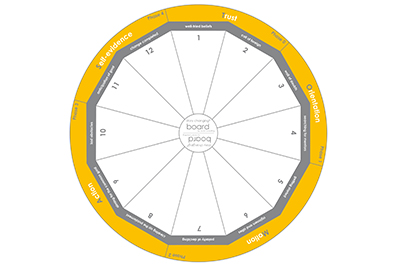We are often more willing to accept changes in our private lives than we are when change comes to our professional environment. Businesses looking to alter, improve or evolve their practices are more often confronted with employee resistance than with employee enthusiasm.
Yet, if you want your business to keep up in the race, you must be perpetually prepared to initiate and successfully implement change. This is where story changing® comes in. We developed story changing® to guide both the emotional journey each employee traverses as well as the structural business processes involved in your transition – in one unique model. Story changing® provides you with the appropriate tools to attune your internal organization to the transitional process. It also creates the necessary sensitivity to support employees involved in the process. Together, you reach your destination on the turnpike to transition.
Story changing® is divided into 5 phases, beginning with phase 0. Phase 0, also called the trust phase, is launched prior to transition. Mutual trust is the basis of all successful transitional processes. Trust in your employees and their trust in you, their leader. Before implementing change, any doubts and uncertainties must be brought to light, discussed and clarified.
The next phase, the orientation phase, deals with…you guessed it, orientation. Here, you let your employees know where the journey will take them, inviting them to travel with you. Employees also need to have a clear idea of the consequences, should the change not take place. What impact will this have on the company and on each individual? In phase 1, every involved employee learns his or her role in the transitional process, their responsibilities for and contributions to a successful journey.
Phase 2 now sets the wheels in motion. Initial steps are defined and carried out. Here, any tangible resistance will become evident. In the subsequent phase 3, this resistance is confronted, decisions are consciously made and responsibility for these decisions is assumed.
Now that you have successfully passed through phases 2 and 3, your company vision matures into a living company culture during the final phase. Change evolves into identity, substantially characterized by your leadership culture and principles. It is important to celebrate primary successes, giving all those involved an opportunity to acknowledge the improved situation.
These 5 phases are the backbone of story changing®:
T – Trust: Establishing trust, Phase 0
O – Orientation: Where you are, where you’re going, Phase 1
M – Motion: Hitting the road, Phase 2
A – Action: Decisions become deeds, Phase 3
S – Self-Evidence: Change matures to identity, Phase 4
Taken together, the 5 phases result in the T.O.M.A.S. Principle®, the framework of our 12-step story changing® model.
All in all, the key to success lies in establishing a change-competent company culture. Yet, how to implement a positive, enduring culture of change? It is important to celebrate successfully carried out transitional processes, making change an element of your company identity. An enduring, positive culture of change can only emerge from your and your employees’ intimate involvement in transitional processes from the word go.




